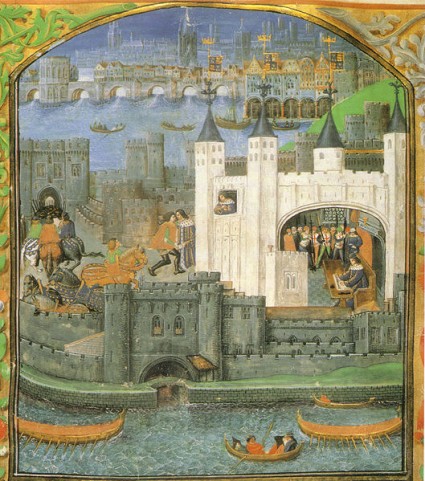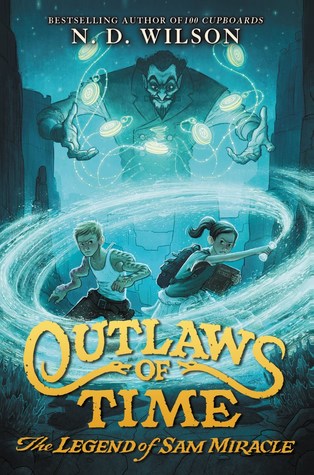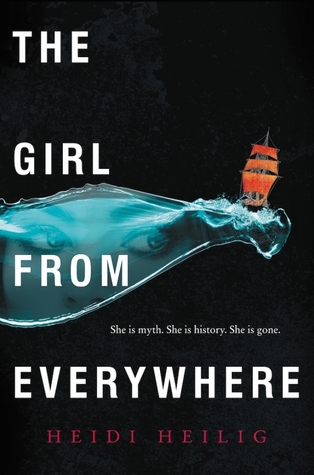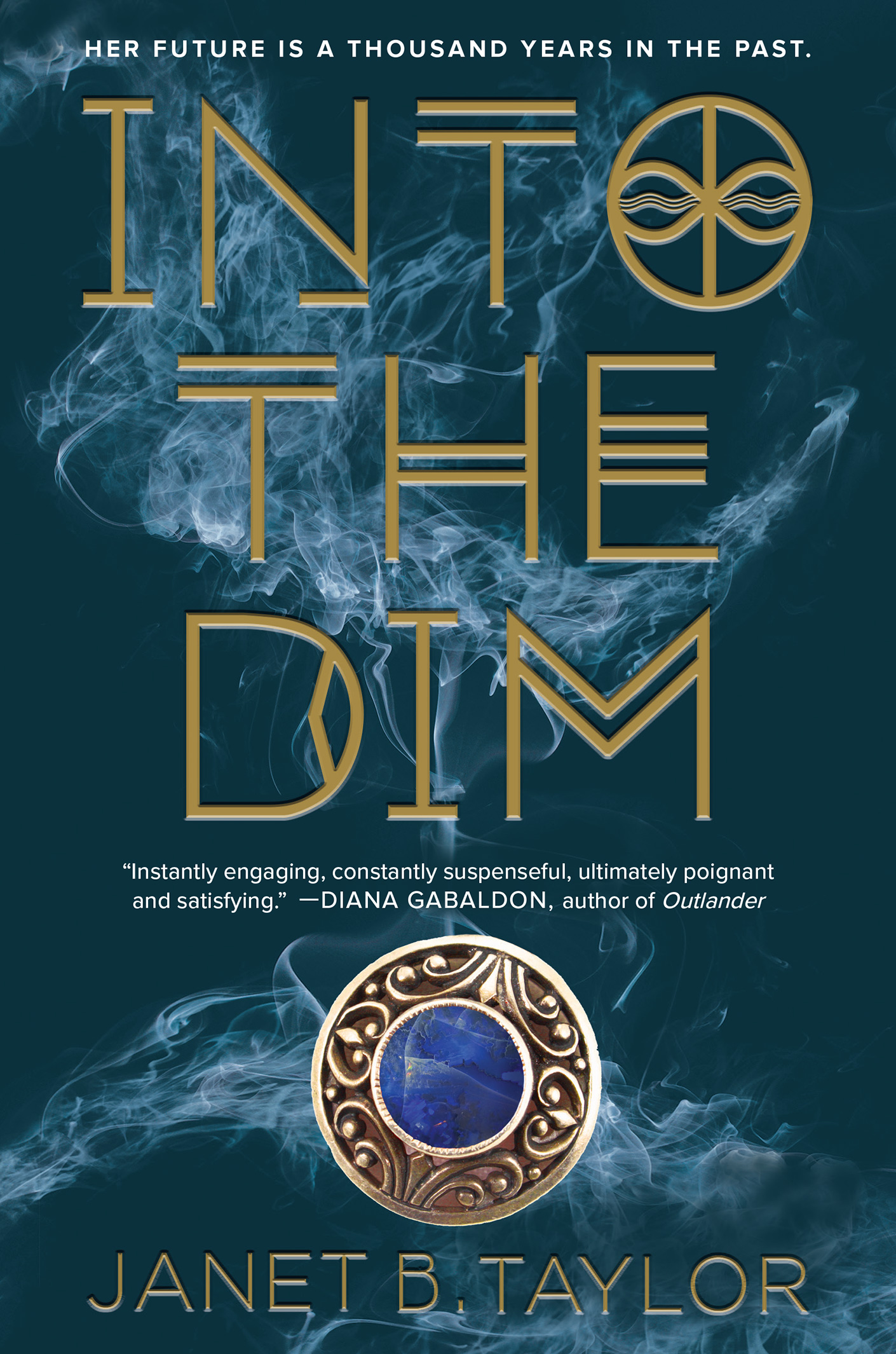 In Janet Taylor’s Into The Dim, when 21st century lead character Hope Walton enters 12th-century London, she reflects that “My mom was a renowned historian… Reviewers wrote how Sarah Walton’s lectures painted such vivid pictures, it was as though she’d seen the history with her own eyes. I snorted. Kinda cheated there didn’t you, Mom.” Of course we frontlist buyers have our own means of cheating about future trends: ARCs. In the space of thirty minutes of sorting through spring frontlist titles I divined the newest hot sub genre of 2016. I encountered three really good time-traveling books in a single pile. Had my future self come into the ARC room and grouped them together so I would make that discovery? Probably, but I won’t be sure until I intersect with that point in time. Still, there’s no need to wait to have a look at this new trend.
In Janet Taylor’s Into The Dim, when 21st century lead character Hope Walton enters 12th-century London, she reflects that “My mom was a renowned historian… Reviewers wrote how Sarah Walton’s lectures painted such vivid pictures, it was as though she’d seen the history with her own eyes. I snorted. Kinda cheated there didn’t you, Mom.” Of course we frontlist buyers have our own means of cheating about future trends: ARCs. In the space of thirty minutes of sorting through spring frontlist titles I divined the newest hot sub genre of 2016. I encountered three really good time-traveling books in a single pile. Had my future self come into the ARC room and grouped them together so I would make that discovery? Probably, but I won’t be sure until I intersect with that point in time. Still, there’s no need to wait to have a look at this new trend.
Of course time-travel books have never gone out of fashion, just ask any of the 13 Doctor Whos, and the legion of Diana Gabaldon fans, not to mention Sylvia Grove’s Glass Sentence trilogy with its creative fracturing of time. Nonetheless with Heidi Helig’s The Girl from Everywhere, N.D. Wilson’s Outlaws of Time, and Janet Taylor’s Into the Dim, we have clear evidence of a new fiction trend.
 As one might expect from N.D. Wilson’s previous middle grade fantasy series’ The Ashtown Burials and 100 Cupboards, Outlaws of Time is the start of another strong middle-grade fantasy series, well written, and strong on both character development and action.The series posits that “time walking” is the work of gifted magicians able to bend and shift time and follows a lead character whose advent of this ability is heralded by strange dreams. The story is a universe saving adventure. Lead character Sam is matched with a strong female pal, Grace, with just a hint of a warmth beyond friendship developing amid their camaraderie. Outlaws is rock-solid 10 and up fare.
As one might expect from N.D. Wilson’s previous middle grade fantasy series’ The Ashtown Burials and 100 Cupboards, Outlaws of Time is the start of another strong middle-grade fantasy series, well written, and strong on both character development and action.The series posits that “time walking” is the work of gifted magicians able to bend and shift time and follows a lead character whose advent of this ability is heralded by strange dreams. The story is a universe saving adventure. Lead character Sam is matched with a strong female pal, Grace, with just a hint of a warmth beyond friendship developing amid their camaraderie. Outlaws is rock-solid 10 and up fare.
The Girl from Everywhere and Into The Dim represent two outstanding fantasy debuts. Both richly integrate historical content into their time-traveling story lines, and both feature strong female lead characters and complex family and romance dynamics. Nonetheless they differ in important ways. The Girl from Everywhere relies on a time-traveling ship and on specialized maps to navigate between temporal ports. Into the Dim gives the mechanism of time travel a good deal more thought, starting with an old school time machine, invented by Nikola Tesla, designed to function at Ley line points and work with converging vortices. The operation of the machine is controlled by an array of physical laws, discovered by some pretty gnarly trial and error, and, unlike sailing and sorcery, is a physically and mentally extreme experience.
 The most important distinction between the books is that The Girl From Everywhere is a fantasy book at heart with a time traveling theme. It makes creative use of little known and highly interesting historical elements, using history in a liberal rather than a literal sense, to great effect. Into the Dim is essentially historical fiction with a highly developed time-traveling element at its core. It is a romp of a book, big fun, with a terrific first-person narrator carrying a surprising backstory. It comes complete with rich and appealing secondary characters, fabulous villainy and a small, and credible secret time-saving society with an adjacent, evil splinter group. The time-traveling element is set around the time of the ascension of Eleanor of Aquitaine and Henry II to England’s throne in 1154, and is portrayed both accurately and evocatively.
The most important distinction between the books is that The Girl From Everywhere is a fantasy book at heart with a time traveling theme. It makes creative use of little known and highly interesting historical elements, using history in a liberal rather than a literal sense, to great effect. Into the Dim is essentially historical fiction with a highly developed time-traveling element at its core. It is a romp of a book, big fun, with a terrific first-person narrator carrying a surprising backstory. It comes complete with rich and appealing secondary characters, fabulous villainy and a small, and credible secret time-saving society with an adjacent, evil splinter group. The time-traveling element is set around the time of the ascension of Eleanor of Aquitaine and Henry II to England’s throne in 1154, and is portrayed both accurately and evocatively.
Into The Dim is so much fun that it is almost worrisome. To get at the nuts and bolts of all this time travel stuff I asked its author Janet Taylor a few questions.
Kenny: Upon entering 12th-century London Hope Walton reflects that “My mom was a renowned historian…Reviewers wrote how Sarah Walton’s lectures painted such vivid pictures, it was as though she’d seen the history with her own eyes. I snorted. Kinda cheated there didn’t you, Mom.” What sort of analogous cheating did you employ in writing Into the Dim?
Janet: Dude, you got me! Yeah, I cheated and did a bit of my very own time traveling. Sort of. See, I love to travel. Whenever I could, I visited places where those historical figures I love to write about had once lived. Edinburgh, London, the Loire Valley, Vienna, Prague… I toured castles and palaces and historical settings all over Europe. Often, I could touch the same stone or stand in the exact spot where these incredible characters had lived and died. Maybe it’s not time travel in the literal sense, but with a little imagination, it’s pretty damn close.
Kenny: Orphans are a staple of children’s literature, of course, largely because they allow children to be exposed to danger, and be ill-used by a caretaker other than their natural parent. The complexities of being an orphan are an important dynamic for many of the characters of your book. Could Bran have disassociated from his mother in the same way had he not been adopted?
Janet: Wow. That’s a difficult question. I want to say ‘yes,’ because Bran’s character is so fundamentally different from Celia’s. But the honest truth is that, had Bran been Celia’s natural child, his upbringing likely would’ve been very different. Much of both Hope and Bran’s inner doubts (and strengths) come from insecurities planted by their own families, because they don’t share the same DNA.
Kenny: In The Worm Ouroboros, Lord Gro explains to King Gorice why he knew that the King had merely conjured a phantasm and no true terror. “O King, as a child weaveth a daisy-chain, thus easily did you conjure up these shapes of terror. Not in such wise fareth he that calleth out of the deep the deadly terror indeed; but with toil and sweat and with straining of thought, will, heart, and sinew fareth he.” One encounters a variety of time-travel means in books: ships sail through time as though to different ports, people wander into the vicinity of ancient stones, spells are cast, time machines are produced. A striking thing about Into The Dim is that time travel is no casual affair, it has severe limits and is an extreme physical experience. Was your thinking on that like Lord Gro’s?
 Janet: That’s a true ‘chicken and egg’ question, isn’t it? Is the experience—the pain, the horrifying imagery—real, or only in the time-traveler’s head? We know that each person’s experience is different. I believe it’s a very real disturbance that manifests differently inside each individual.
Janet: That’s a true ‘chicken and egg’ question, isn’t it? Is the experience—the pain, the horrifying imagery—real, or only in the time-traveler’s head? We know that each person’s experience is different. I believe it’s a very real disturbance that manifests differently inside each individual.Think about it like this. Have you ever experienced jet lag? Though no one’s symptoms are exactly the same, nearly everyone feels like crap. Now take that, multiply it by a couple hundred thousand, and you begin to imagine what it feels like to travel through the Dim.
Kenny: Nothing is more dangerous than altering the past, I get it, but if you could go back in time and alter the ending of one book written by someone else, what would it be and what would you change?
Janet: I thought about this question for a very long time. There’s a big difference in a disappointing ending, and one that’s so gut-wrenching, it affects you for the rest of your life. I chose to focus on the latter. And though there are several I could name, the one I kept coming back to is Wilson Rawls’s Where the Red Fern Grows. I read that book dozens of times when I was a kid. And I swear, every single time, it ripped my soul in two. Even now, just thinking about how Little Ann wasted away because she simply couldn’t go on without…
I’m sorry. *chokes up* It’s still hard to talk about.
Why couldn’t Old Dan have survived, so they could grow old together? I wanted to know that they’d ended their days drowsing on a sun-drenched porch, snuggled together, both of them with those adorable gray whiskers most old dogs acquire. At the very least, couldn’t Ann have left a pup or two behind before she just…gave…up….?
Why, Wilson? Why did you have to break my little heart like that?
WHY?
Kenny: Why indeed!? I can’t think of that last paragraph without tearing up! Sob.
Thank you Janet. Hmmn, well readers, these are three great time travel books, so umm, mark your calendars for spring 2016!

